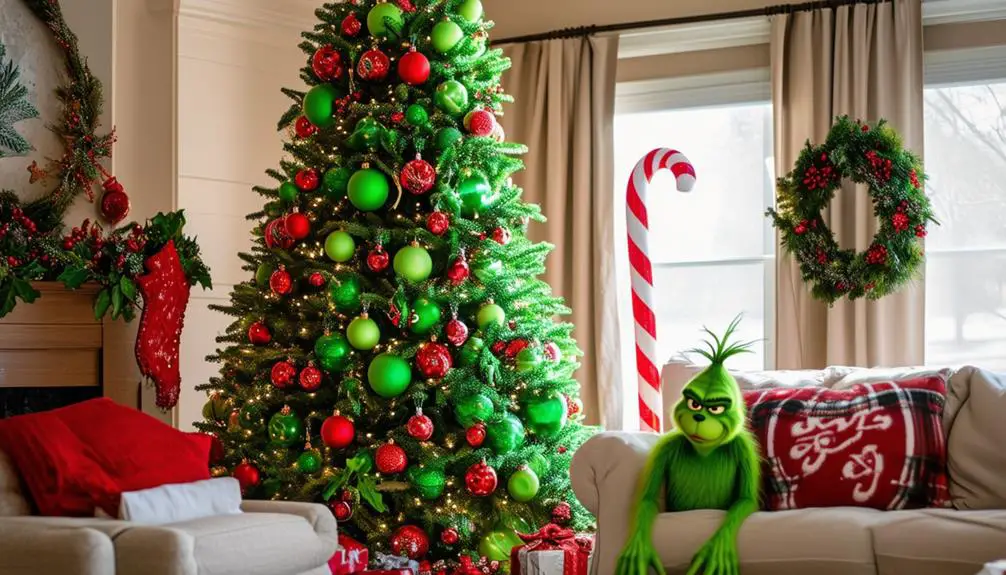You're looking to turn your compact backyard into a tranquil retreat, and a small pond is just the ticket. With a mere 3×3 feet of space, you can create a peaceful ambiance that'll make you forget you're in a small yard. But where do you start? From choosing the perfect fountain or bubbler to selecting the right materials and design elements, the possibilities are endless. And that's just the beginning – you'll also need to ponder maintenance and upkeep to guarantee your mini oasis flourishes. So, what's the first step in bringing your small backyard pond vision to life?
Mini Pond Design Inspiration
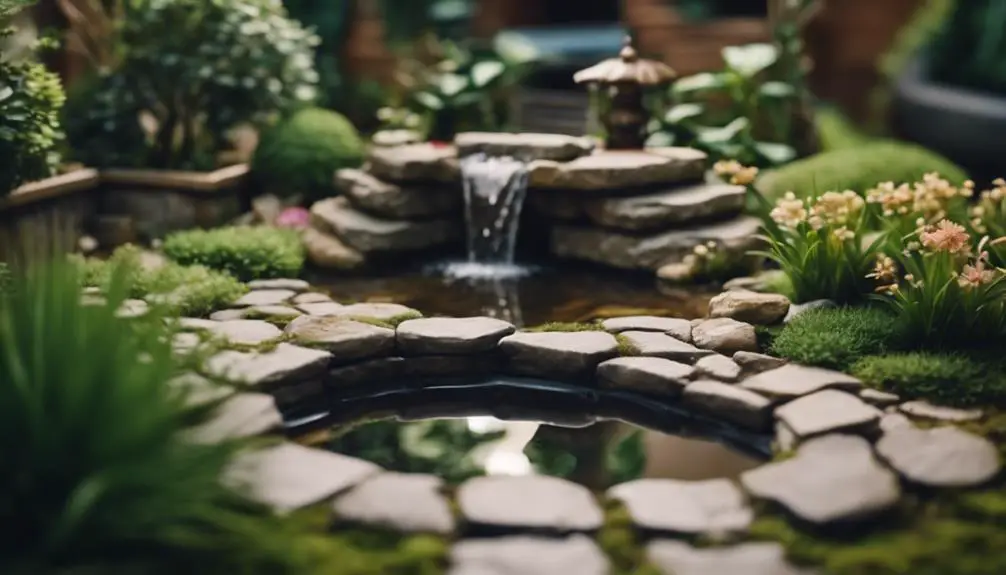
With a mere 3×3 feet of space, you can create a serene mini pond oasis, complete with a small fountain, aquatic plants, and a few strategically placed rocks to evoke a sense of tranquility.
To take your mini pond design to the next level, incorporate thoughtful pond accents that complement the water features. Consider adding a decorative edging, like natural stone or metal, to create a visually appealing border.
You can also incorporate LED lighting to highlight the pond's features and create a mesmerizing ambiance in the evening.
When selecting aquatic plants, choose varieties that thrive in small spaces, such as water lettuce or fairy moss.
A small fountain or bubbler will add movement and sound to your mini pond, creating a soothing atmosphere.
By carefully selecting each element, you can craft a mini pond oasis that's both peaceful and visually stunning.
With a little creativity, even the smallest of spaces can become a tranquil retreat.
Small Space Water Features
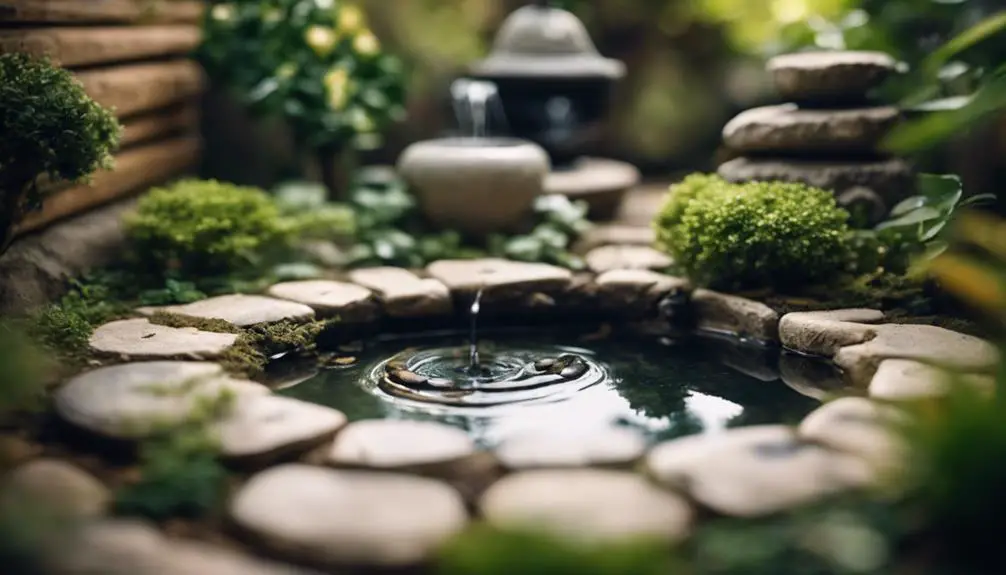
You can further enhance the calming ambiance of your mini pond oasis by incorporating small space water features that create a mesmerizing display of movement and sound. These features are particularly effective in compact spaces, where space constraints often limit design options.
By cleverly integrating water features, you can compensate for the lack of square footage and create a sense of expansiveness.
Consider installing a small fountain or bubbler, which will add visual interest and create a soothing water atmosphere.
These features can be easily integrated into your pond's design, and their gentle sounds will mask any background noise, creating a sense of serenity.
Alternatively, you can opt for a spillway or waterfall, which will add a dynamic element to your pond's design.
These features won't only create movement but also produce a calming sound that will transport you to a peaceful state.
DIY Container Pond Ideas

Transform your patio, balcony, or deck into a serene oasis by creating a DIY container pond, where a vibrant ecosystem thrives in a compact, self-contained environment.
When selecting a container, consider the space you have available and the size of the pond you want to create. A minimum container size of 12-18 inches deep and 2-3 feet wide is recommended to support a healthy ecosystem.
You can use a variety of pond materials, such as plastic, ceramic, or metal, depending on your personal style and budget.
Choose a pond material that's durable, watertight, and resistant to UV damage. You'll also need to add a pump, filtration system, and aquatic plants to create a thriving environment.
Consider adding a layer of gravel or rocks at the bottom of the container to help filter the water and provide a habitat for beneficial bacteria.
With a little creativity and planning, you can create a stunning DIY container pond that attracts birds, butterflies, and other wildlife, and brings a touch of serenity to your outdoor space.
Preformed Pond Kit Options

Preformed pond kits offer a convenient and hassle-free way to create a backyard oasis, as they come with a pre-molded pond shell that's ready for installation, complete with a built-in pump and filtration system.
When choosing a preformed pond kit, you'll want to weigh the size and shape of your backyard, as well as the type of pump and filtration system that's included. Some kits come with a submersible pump, while others have an external pump that sits outside the pond.
You'll also want to ponder the type of liner that's included, as some are more durable than others.
When it comes to pond installation, preformed kits are generally easier to set up than DIY container ponds. Simply dig a hole to fit the pond shell, connect the pump and filtration system, and add water.
You can also customize your pond with additional features like waterfalls, fountains, or aquatic plants. When comparing kits, look for features like energy efficiency, durability, and ease of maintenance.
Solar Powered Pond Pumps
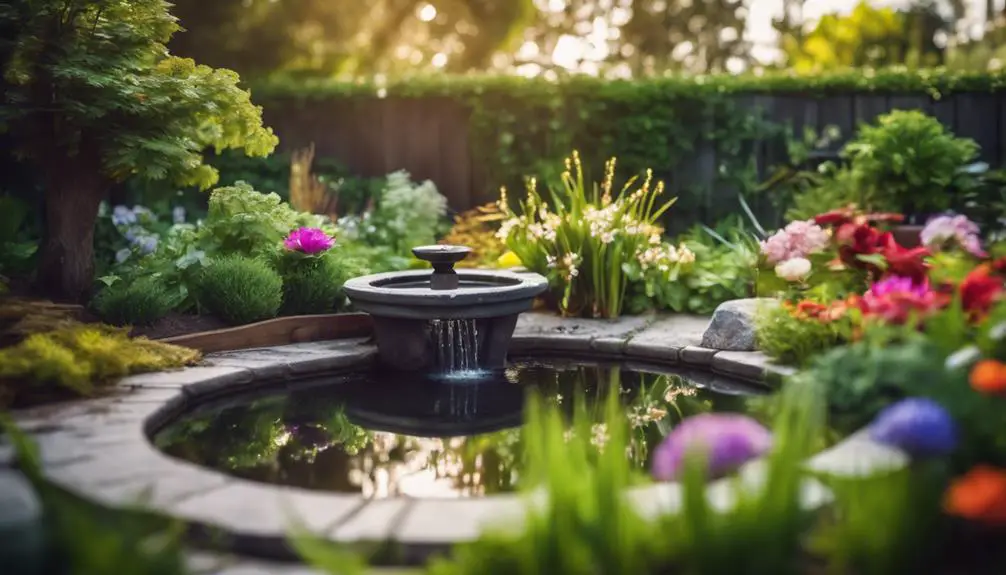
As you consider solar powered pond pumps for your backyard oasis, you'll appreciate the energy efficient options that harness the sun's power to reduce your carbon footprint.
You'll also notice the quiet operation systems that minimize disturbance to the surrounding environment, creating a more peaceful atmosphere.
Energy Efficient Options
Operating a solar-powered pond pump, you'll harness free energy from the sun to circulate water, reducing your reliance on traditional electricity and minimizing your pond's carbon footprint.
This eco-friendly option not only helps the environment but also yields significant energy savings.
With a solar-powered pump, you can expect to cut your energy consumption by up to 80%, translating to lower electricity bills and a reduced carbon footprint.
When selecting a solar-powered pond pump, look for models with high-efficiency panels and a durable design.
These pumps typically come with a built-in controller that regulates energy output, ensuring ideal performance even on cloudy days.
You'll also want to weigh the pump's flow rate, which should match the size and volume of your pond.
Quiet Operation Systems
Your solar-powered pond pump hums along quietly, thanks to its brushless motor design, which minimizes vibrations and reduces noise pollution, allowing you to fully appreciate the serene ambiance of your backyard oasis.
This innovative technology guarantees a peaceful atmosphere, perfect for relaxation and entertainment.
The silent motor operation is further enhanced by the use of a specially designed whisper pump, which reduces noise levels to almost zero.
This means you can enjoy the soothing sounds of your pond's water features without the distraction of a noisy pump.
As you explore the benefits of quiet operation systems, you'll discover that they're not only environmentally friendly but also energy-efficient.
With a solar-powered pump, you can save energy costs while maintaining a healthy and thriving ecosystem.
The advanced design of these pumps also guarantees a longer lifespan, reducing the need for frequent replacements.
Natural Rock Pond Edging
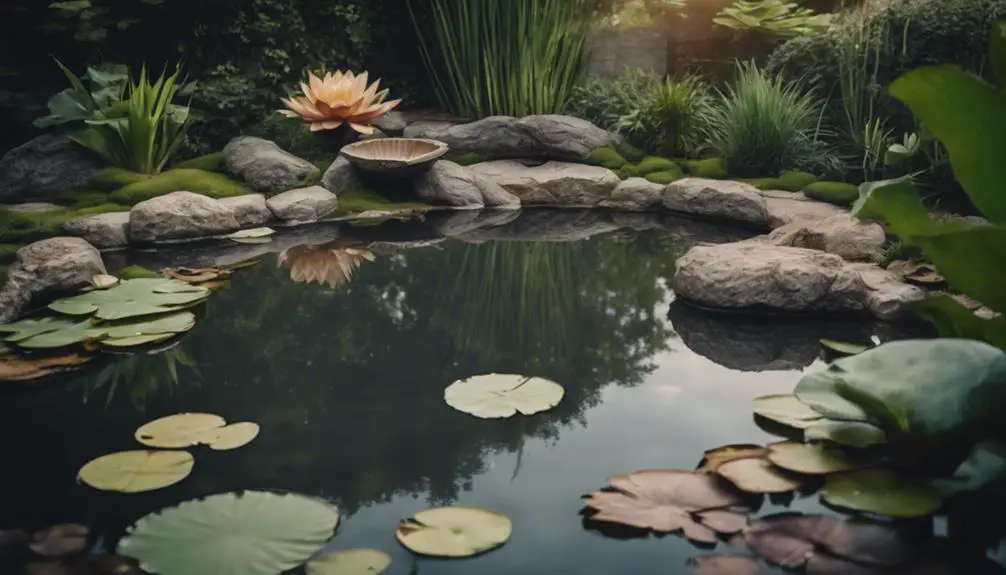
Create a visually striking natural rock pond edging by carefully selecting rocks of varying sizes and textures to form a seamless progression between your pond's waterline and surrounding landscape.
You'll want to choose rocks that complement the colors and tones of your pond's surroundings, creating a harmonious blend of natural elements. Consider incorporating rock formations with unique shapes and patterns to add visual interest to your pond's edge. Stone accents, such as small boulders or river rocks, can be strategically placed to create a sense of movement and flow around the pond.
To achieve a cohesive look, group similar rocks together, gradually shifting from larger to smaller stones as you move away from the water's edge. This will create a sense of depth and dimensionality, drawing the viewer's eye towards the pond.
Don't be afraid to experiment with different rock arrangements, as this will allow you to find the perfect balance of texture, color, and form for your natural rock pond edging. With a little creativity and patience, you'll be able to craft a stunning, one-of-a-kind edging that elevates your entire backyard oasis.
Small Pond Maintenance Tips
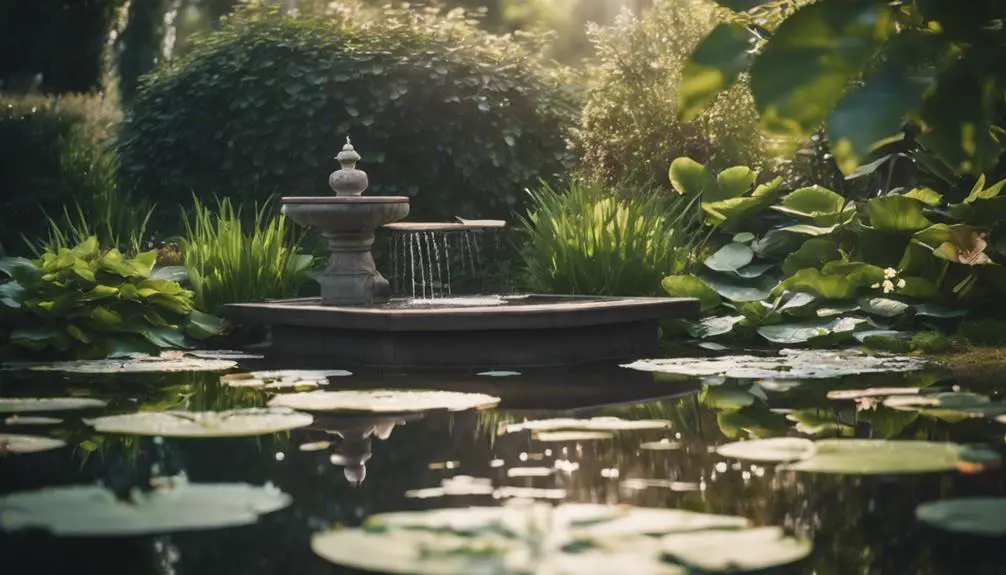
Regular water testing helps you pinpoint potential issues in your small pond before they escalate into major problems, such as algae blooms or fish die-offs.
You'll want to test the water's pH, ammonia, nitrite, and nitrate levels at least once a week, especially during the first few months after setup. Invest in a good quality water test kit, which usually includes test strips or a digital meter.
When you detect any imbalances, take corrective action promptly. For example, if the pH is too high, add a pH decreaser. If ammonia levels are high, perform a partial water change.
Regular pond cleaning is also essential.
You'll need to remove debris, such as fallen leaves or dead fish, to prevent them from decaying and polluting the water. Use a pond skimmer or net to scoop out surface trash.
Every few weeks, vacuum the pond floor to remove sediment and decaying matter. Consider investing in a pond pump to improve water circulation and oxygenation.
Aquatic Plants for Shade
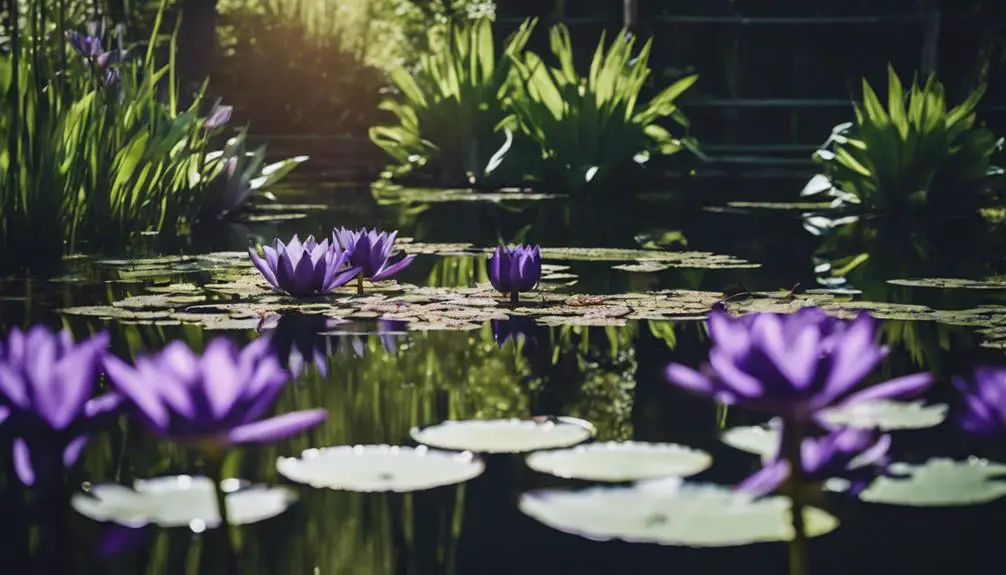
As you design your backyard pond, you'll want to ponder the role aquatic plants play in creating shade.
You'll need to select species that thrive in low-light conditions, understanding that even partial shade can impact plant growth and development.
Shade Tolerant Species
In shaded areas of your backyard pond, you'll want to choose aquatic plants that thrive in low-light conditions, such as the elegant Water Wisteria or the versatile Java Fern, which can tolerate shade levels as low as 1-2 feet of submerged depth.
These shade tolerant species are perfect for areas receiving indirect sunlight or dappled shade.
When selecting shade loving plants, consider the Anacharis, a fast-growing, oxygenating plant that flourishes in low-light environments.
The Cabomba, with its delicate, feathery foliage, is another excellent choice for shaded areas, as it can thrive in depths of up to 10 feet.
For a more decorative option, the Taro, with its striking, heart-shaped leaves, is a great addition to shaded ponds.
Tolerant varieties like the Anubias and Cryptocoryne are also excellent choices, as they can adapt to a range of lighting conditions.
Planting in Shade
Planting in shade requires careful selection of aquatic plants that can't only tolerate low light but also thrive in these conditions, and by doing so, you'll create a visually stunning and healthy ecosystem.
When selecting plants for shaded nooks, consider those with adaptations that enable them to maximize available light. For instance, plants with larger leaves or variegated foliage can absorb more light, while others with slender leaves or stems can stretch towards available light sources.
When planning your shaded pond area, consider the specific plant preferences for each species. Some plants, like Water Wisteria or Java Moss, prefer shadier conditions and can thrive in areas receiving as little as 1-2 hours of direct sunlight.
Others, like Anacharis or Hornwort, can tolerate partial shade but still require some direct sunlight. By understanding the unique needs of each plant, you can create a diverse and thriving ecosystem that flourishes even in the shadiest of areas.
Shade Affects Growth
As you design your small backyard pond, it's vital to ponder the impact of shade on aquatic plant growth.
Two to three hours of direct sunlight can profoundly impact the growth of aquatic plants, with those adapted to shade often producing longer stems and larger leaves to compensate for limited light.
When selecting plants for your pond, keep in mind that shade-tolerant species will thrive in areas receiving less than four hours of direct sunlight.
Pond shading can have several benefits, including reduced algae growth and a more balanced ecosystem.
By incorporating shade-tolerant plants, you can create a more diverse and resilient aquatic environment.
For example, plants like water wisteria and hornwort excel in low-light conditions, producing delicate foliage and vibrant colors.
To maximize shade benefits, take into account incorporating floating plants or marginal plants that can tolerate partial shade.
These plants won't only thrive in shaded areas but also provide a natural filter for your pond, helping to maintain water clarity and quality.
Attracting Wildlife to Ponds
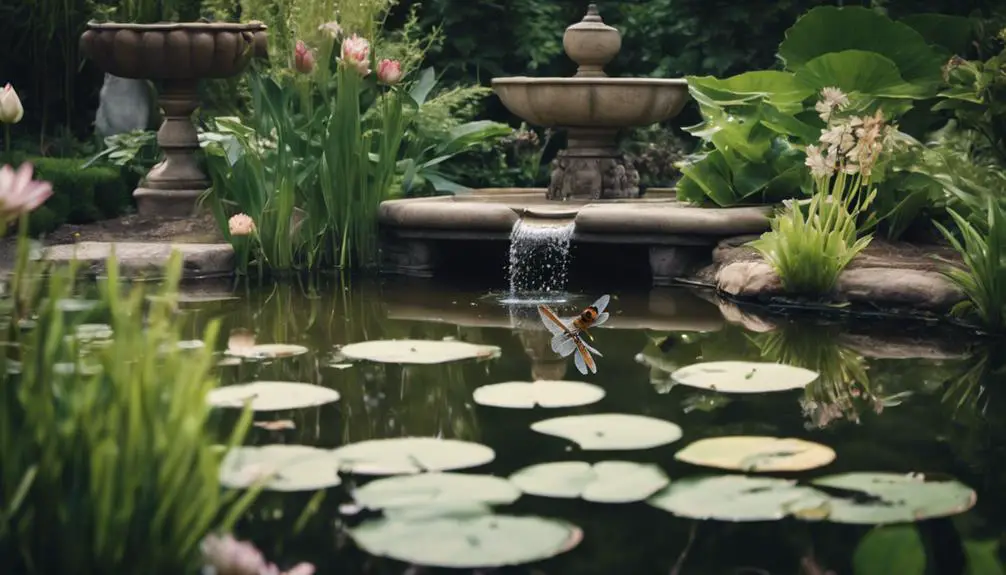
By incorporating native aquatic plants, such as water lilies or cattails, into your pond's ecosystem, you create a welcoming habitat that attracts a diverse range of wildlife, from dragonflies to frogs.
These plants provide shelter, food, and breeding grounds for various species, transforming your backyard into a thriving wildlife habitat.
As you observe your pond, you'll notice birds visiting the water's edge, taking advantage of the aquatic buffet. You might even spot a heron or an egret wading in the shallows, searching for fish or amphibians.
By incorporating rocks, logs, or other features, you can create a bird sanctuary, providing a safe haven for feathered friends to rest and refuel.
As your pond matures, you'll find that it becomes a hotspot for local wildlife, attracting species you never thought possible in your own backyard.
Waterfall and Fountain Ideas

Adding a waterfall or fountain to your pond creates a visually striking focal point, introducing the soothing sounds of moving water that immediately capture attention and create a sense of tranquility.
The gentle ripple of water flowing over rocks or the soft gurgle of a fountain's streams can be incredibly calming. You can choose from various waterfall sounds, such as a gentle trickle or a thundering cascade, depending on the ambiance you want to create.
When selecting a fountain style, consider the shape and size of your pond, as well as the surrounding landscape. Modern fountain styles often feature sleek, geometric shapes, while more traditional designs incorporate natural elements like stone or wood.
Consider a solar-powered fountain for an eco-friendly option. You can also experiment with different materials, such as copper or stainless steel, to add a unique touch to your fountain.
Backyard Pond Lighting Options
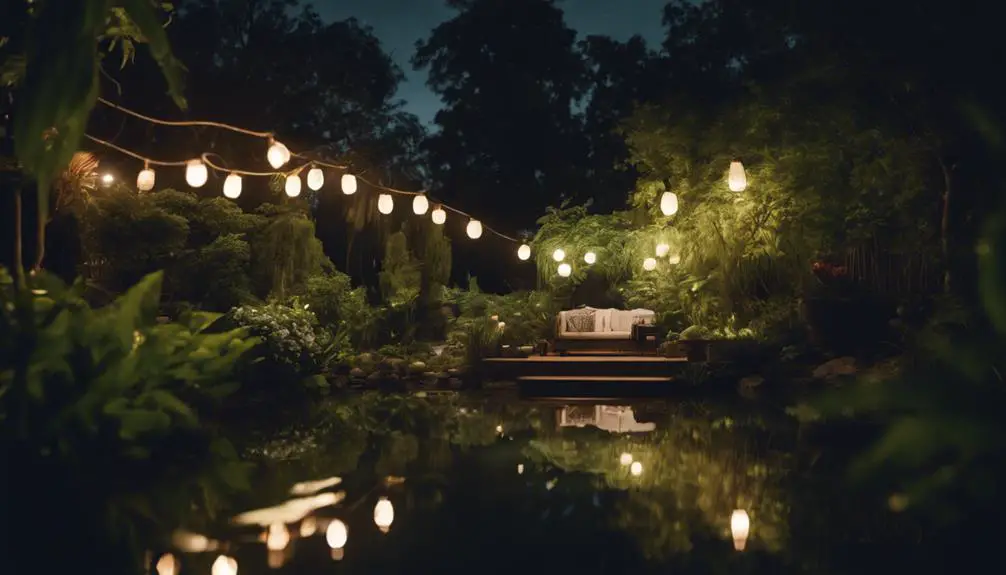
As you design your backyard pond, you're now faced with the exciting task of selecting the perfect lighting options to bring your water feature to life.
You'll want to ponder the type of lighting effects you want to achieve, such as highlighting specific features or creating a warm glow.
Pond Lighting Effects
Illuminate your backyard pond with creative lighting effects that transform its ambiance, highlighting the water features, plants, and surrounding landscape at night.
By strategically placing lights, you can create a mesmerizing display that enhances the pond's natural beauty.
To achieve this, focus on lighting accents that emphasize the pond's features, such as underwater lights that illuminate the water's clarity or highlight the vibrant colors of aquatic plants.
You can also use spotlights to draw attention to specific areas, like a waterfall or fountain, creating a sense of drama and visual interest.
Additionally, consider using path lights or string lights to create a soft, warm glow around the pond's perimeter, defining the space and guiding visitors through the area.
Solar Powered Lights
Consider harnessing the power of the sun to energize your pond's lighting system with solar-powered lights, a cost-effective and eco-friendly option that eliminates the need for electrical wiring and reduces your carbon footprint.
These lights are designed to absorb sunlight during the day and convert it into electrical energy to power your pond's lighting system at night.
With solar-powered lights, you can create a mesmerizing lighting ambiance that highlights the beauty of your pond without incurring high energy costs.
When placed strategically around your pond, solar-powered lights can accentuate the water sparkle, creating a stunning visual effect.
You can position them to highlight specific features, such as waterfalls or fountains, or to create a soft, ambient glow that illuminates the entire pond.
The lights' energy-efficient design guarantees that they provide consistent lighting throughout the night, without draining your wallet or the environment.
Nighttime Ambiance Creation
With a thoughtful selection of backyard pond lighting options, you can craft a mesmerizing nighttime ambiance that transforms your outdoor space into a serene oasis, perfect for relaxation and entertainment.
To create an enchanting atmosphere, consider installing submersible lights that illuminate the pond's floor, casting a warm glow on the surrounding landscape. You can also use floating lights that resemble lily pads, adding a touch of whimsy to your pond's surface.
To evoke the magic of Moonlight Reflections, position spotlights strategically to highlight the pond's water features, such as fountains or waterfalls. This will create a sense of drama and visual interest, especially during Starry Nights when the sky is filled with twinkling stars.
For a more subtle approach, use string lights or fairy lights to create a soft, ambient glow around the pond's perimeter. By combining different lighting effects, you can create a unique and enchanting nighttime ambiance that invites you to linger and enjoy the beauty of your backyard pond.
Small Pond Aeration Systems

As you plunge into creating a thriving small pond ecosystem, a well-designed aeration system becomes vital to maintaining oxygen levels, circulating water, and preventing stagnation.
Proper pond oxygenation is pivotal, as it supports the health and well-being of aquatic life. A well-oxygenated pond environment promotes healthy plant growth, reduces algae blooms, and prevents the buildup of toxic gases.
Effective aeration benefits include increased water circulation, reduced stagnation, and improved water clarity.
When selecting an aeration system, consider the size and depth of your pond, as well as the type of aquatic life it supports.
Look for systems that provide consistent oxygen levels, especially during peak summer months when oxygen demand increases.
Some popular options include submersible aerators, surface aerators, and diffused aeration systems. Each type has its advantages, so vital research and choose the one that best suits your pond's unique needs.
Budget-Friendly Pond Decor
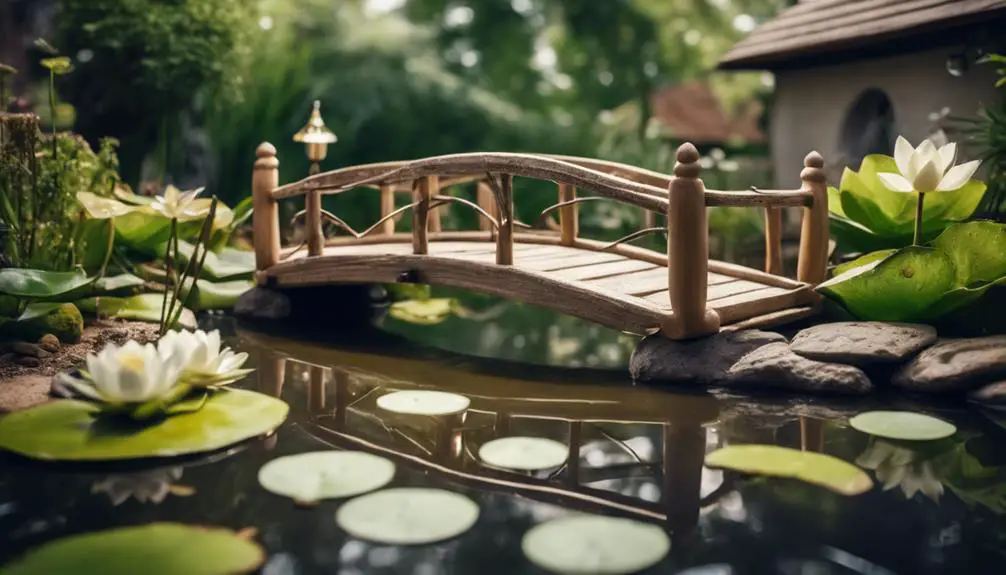
Now that your pond's ecosystem is thriving, it's time to add some visual appeal with budget-friendly decor that complements its natural beauty.
You can create a serene ambiance by incorporating pond accents that blend seamlessly with the surroundings. Consider adding solar-powered lanterns or string lights to create a warm glow around the pond's perimeter.
For a more rustic look, incorporate natural elements like rocks, driftwood, or bamboo into your decorative theme.
To add some color and texture, introduce aquatic plants like water lilies or cattails, which will also help maintain the pond's ecosystem.
You can also create a focal point by placing a small statue or fountain in a strategic location. When selecting decorative themes, think about the overall aesthetic you want to achieve.
Do you prefer a modern, sleek look or a more whimsical, natural ambiance? Whatever your style, remember to keep it simple and unobtrusive, allowing the pond's natural beauty to take center stage.
With a little creativity, you can create a stunning and budget-friendly pond decor that elevates your outdoor space.
Frequently Asked Questions
Can I Have a Pond if I Have a Septic System Nearby?
You'll need to check local septic regulations, ensuring your pond doesn't compromise the system. Typically, a safe pond proximity is 10-20 feet away, but this varies, so consult with an expert to determine the ideal distance for your specific setup.
How Do I Protect My Pond From Neighborhood Cats and Dogs?
To safeguard your pond from curious neighborhood cats and dogs, you'll want to install pond fencing, ideally 3-4 feet high, and consider motion sprinklers that suddenly activate, startling intruders, to guarantee your aquatic haven remains undisturbed.
Are Ponds Safe for Young Children and Pets to Be Around?
When you create a pond, you'll want to guarantee it's safe for young children and pets; consider pond fencing to prevent accidental falls, and be aware of water hazards like drowning and electrical shock from pumps and filters.
Can I Install a Pond Under a Large Tree's Root System?
When considering installing a pond under a large tree's root system, you'll need to assess the tree canopy's dripline and root excavation requirements to guarantee the pond's placement won't compromise the tree's stability or your safety.
Do I Need a Building Permit to Install a Small Backyard Pond?
You'll need to check with your local government to determine if you need a building permit for your pond installation, as pond regulations and local ordinances vary, requiring careful review to guarantee compliance.
Conclusion
As you gaze upon your serene oasis, the gentle ripples of the mini pond's water, the soft glow of LED lights, and the soothing sounds of the fountain or bubbler create a sense of tranquility.
With regular maintenance and attention to essentials like water testing and cleaning, your small backyard pond will thrive.
By incorporating unique touches like copper or stainless steel water features, you've crafted a one-of-a-kind retreat that invites relaxation and rejuvenation.


